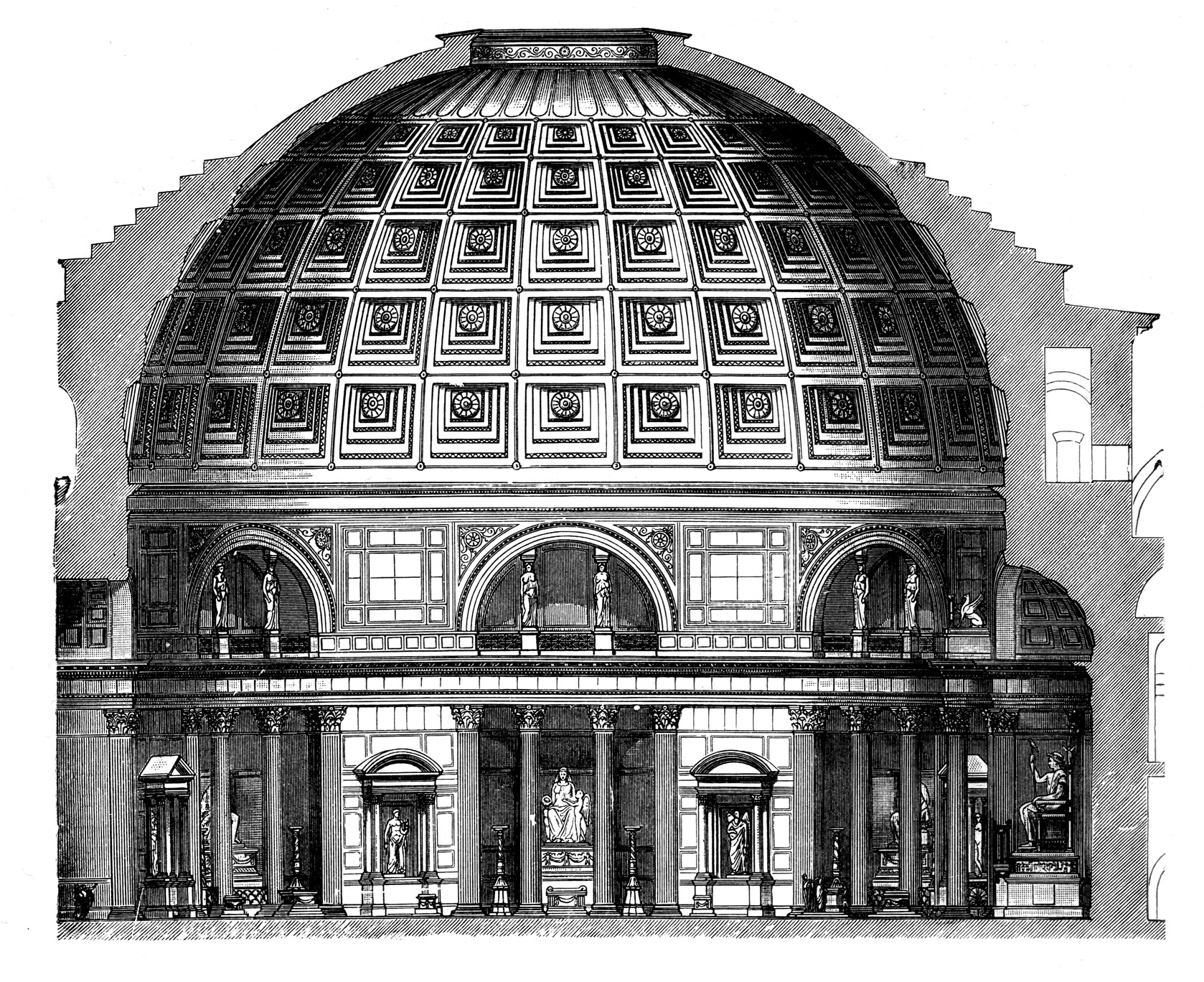
Completed circa 124 BC, the pantheon was commissioned by Marcus Agrippa as a temple to worship all gods. This temple is particularly unique in the size and construction of its domed cupola, which spans 43m, making it the largest unsupported concrete dome in existance. While modern engineers have been able to determine that the dome owes its size, strength, and longevity to concrete mixes of different densities and thicknesses as well as the circular oculus at its peak which reduced the overall weight of the structure, this knowledge was lost in the intermittent Medieval and Renaissance periods. While many architects drew inspiration from the architecture of this building, without the structural knowledge needed to combat hoop stresses within a dome this size, the Pantheon's cupolla remained unparalleled for roughly 1200 years until the completion of the Duomo in Florence.
“The Pantheon.” The Roman Pantheon: the Triumph of Concrete, by David Moore, MARC/CCEOP, University of Guam Station, 1995.
Image courtesy of https://commons.wikimedia.org/w/index.php?curid=175842, Public Domain
